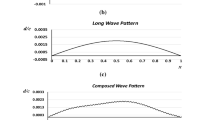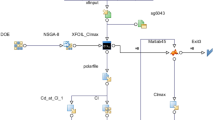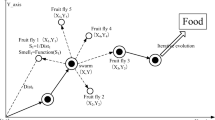Abstract
A multidisciplinary research method was employed with the intention to create a series of bio-inspired flattened airfoils, observe their aerodynamic characteristics, and analyse their applicability to small devices or to designs of high-speed trains, within the shortest period in the conceptual stage. A research specimen of a kingfisher, selected for biomimicry, was examined with the following methods: visual inspection, analysis of photographs, manufacturing quality control measurement with a 3D laser scanner, and microscopy. A basic multi-arc-line profile, re-engineered from the overlapped specimen shape data and based on the observations, was used for designing a series of seven derived airfoils. The aerodynamic characteristics of the bio-inspired airfoils were obtained with the panel methods at low and moderate subsonic speeds, while the small transonic difference method was used in the high-subsonic speed range. Basic and ellipse-like airfoils produce higher total drag at low and moderate velocities and higher forebody drag in the high-subsonic range when compared to derived and parabola-like airfoils. The obtained critical Mach numbers are in the range from 0.76 to 0.78, where three bionic airfoils show values equal to or smaller than the values of ellipse- and parabola-like airfoils. The profile with the shortest bio-inspired relative chord has a higher critical Mach number value than the parabola-like profile. The sonic lines above these profiles appear at close positions. The applied set of examination methods of the bio-inspired design is not time consuming and produces sufficiently good results in the conceptual stage. Therefore, a further development of unique and adjusted numerical methods and codes at pre-computational fluid dynamics run is encouraged, together with shape parameterization.















Similar content being viewed by others
Availability of data and materials
All the data are given in the manuscript.
Code availability
Except for TSFOIL2, the used codes are freely available on the internet and referenced. TSFOIL2 is available online for educational purposes. We kindly get the permission for use of TSFOIL2 for implementation in this work from the Kevin T. Crofton Department of Aerospace and Ocean Engineering, Virginia Tech, USA, on which we are thankful.
References
Ding S-S, Li Q, Tian A-Q, Du J, Liu J-L (2016) Aerodynamic design on high-speed trains. Acta Mech Sin 32(2):215–232. https://doi.org/10.1007/s10409-015-0546-y
Wang R, Zhang J, Bian S, You L (2018) A survey of parametric modelling methods for designing the head of a high-speed train. Proc Inst Mech Eng F J Rail Rapid Transit 232(7):1965–1983. https://doi.org/10.1177/0954409718756558
Raghunathana R, Kimb H, Setoguchic T (2002) Aerodynamics of high-speed railway train. Prog Aerosp Sci 38:469–514
Tian H-Q (2019) Review of research on high-speed railway aerodynamics in China. Transp Saf Environ 1(1):1–21. https://doi.org/10.1093/tse/tdz014
Muñoz-Paniagua J, García J, Crespo A (2013) Multi-objective aerodynamic optimization of high-speed trains in tunnels. In: 10th international conference on evolutionary and deterministic methods for design, optimization and control with applications to industrial and societal problems, EUROGEN 2013, 7–9 Oct 2013, Las Palmas de Gran Canaria, España, pp 1–15
Sun-Joong K, Ji-Hyun L (2014) The evolutionary changes of the streamlined high-speed locomotives: the quantitative analysis to reveal the changes of bullet motif locomotive design criteria. In: XVIII conference of the iberoamerican society of digital graphics—SIGraDi: design in freedom, blucher design proceedings, vol 1, pp 57–61, www.proceedings.blucher.com.br/article-details/14224. Accessed 15 Aug 2020
Drela M, Youngren H (2001) XFOIL 6.94 User Guide. http://web.mit.edu/drela/Public/web/xfoil/. Accessed 25th Feb 2020
Fayemi PE, Wanieck K, Zollfrank C, Maranzana N, Aoussat A (2017) Biomimetics: process, tools and practice. Bioinspir Biomim 12(011002):1–20. https://doi.org/10.1088/1748-3190/12/1/011002
Kobayashi K (2005) JFS biomimicry interview series: No.6 "Shinkansen technology learned from an owl?"—The story of Eiji Nakatsu. In JFS Newsletter No.31. Japan for Sustainability. https://www.japanfs.org/en/news/archives/news_id027795.html. Accessed 18 Mar 2019
Cooney CR, Bright JA et al (2017) Mega-evolutionary dynamics of the adaptive radiation of birds. Nature 542(7641):344–347. https://doi.org/10.1038/nature21074
***, Project Mark My Bird, University of Sheffield, https://www.markmybird.org/gallery/alcedo_atthis/2058. Accessed 18 Aug 2020
Das AJ, Murmann DC, Cohrn K, Raskar R (2017) A method for rapid 3D scanning and replication of large paleontological specimens. PLoS ONE 12(7):e0179264. https://doi.org/10.1371/journal.pone.0179264.Accessed15August2020
Carnaby T (2008) Beat about the Bush: Birds. Jacana Media, Johannesburg
Rašuo B (2014) Bionika u dizajnu (Bionics in design, in Serbian). University of Belgrade, Faculty of Mechanical Engineering, Belgrade (electronic book)
Sawer P (2011) Mirror image: Kingfisher barely causes a ripple as he dives into the water, (ed. Wildlife Photography/Solent, via Daily Mail) from: goo.gl/B14OKP. Accessed on 22 Feb 2016
Gardner R (2006) Alcedo atthis. Animal Diversity Web. https://animaldiversity.org/accounts/Alcedo_atthis. Accessed 02 Oct 2019
Stavenga DG, Tinbergen J, Leertouwer HL, Wilts BD (2011) Kingfisher feathers—colouration by pigments, spongy nanostructures and thin films. J Exp Biol 214:3960–3967
Polić-Radovanović S, Ristić S, Jegdić B, Nikolić Z (2010) Metodološki i tehnički aspekti primene novih tehnika u zaštiti kulturne baštine (The methodological and technical aspects of new techniques in protecting the cultural heritage, in Serbian). Institut Goša and Centralni institut za konzervaciju, Belgrade
Linić S (2018) Biomimikrija kao metod aerodinamićkog dizajniranja voza velikih brzina (Biomimicry as a method of the high speed train aerodynamical designing, in Serbian). Dissertation, University of Belgrade, Faculty of Mechanical Engineering
Hocken RJ, Chakraborty N, Brown C (2005) Optical metrology of surfaces. CIRP Ann 54(2):705–719
***. Hexagon Metrology. ROMER Absolute Arm. Product brochure. http://w3.leica-geosystems.com/downloads123/hxrom/romer/general/brochures/ROMER%20Absolute%20Arm%20Product%20Brochure_en.pdf. Accessed 28 Feb 2018
Gerbino S, Del Giudice DM, Staiano G, Lanzotti A, Martorelli M (2016) On the influence of scanning factors on the laser scanner-based 3D inspection process. Int J Adv Manuf Technol 84(9–12):1787–1799
Ranzuglia G, Callieri M, Dellepiane M, Cignoni P, Scopigno R (2013) MeshLab as a complete tool for the integration of photos and color with high resolution 3D geometry data, CAA 2012 conference proceedings, pp 406–416
***. Blender. Blender Foundation. http://www.blender.org. Accessed 28 Feb 2018
Cummings RM, Mason WH, Morton SA, McDaniel DR (2015) Applied computational aerodynamics: A modern engineering approach. Part of Cambridge Aerospace Series, USA
Anderson JD Jr (2001) Fundamentals of aerodynamics, 3rd edn. McGraw-Hill, New York
Vos R, Farokhi S (2015) Introduction to transonic aerodynamics. In: Series: fluid mechanics and its applications 110. Springer, Netherlands
Hepperle M (2017) JAVAFOIL User’s Guide. https://www.mh-aerotools.de/airfoils/java/JavaFoil%20Users%20Guide.pdf . Accessed 25th Feb 2020
Mason WH (2020) Software collection: software for aerodynamics and aircraft design. Kevin T. Crofton Department of aerospace and ocean engineering virginia tech. http://www.dept.aoe.vt.edu/~mason/Mason_f/MRsoft.html. Accessed 25th Feb 2020
Murman EM., Bailey FR., Johnson ML (1975) TSFOIL—A computer code for two-dimensional transonic calculations, including wind-tunnel wall effects and wave-drag evaluation. In: Aerodynamic analyses requiring advanced computers, Part II. NASA SP-347:769–788.
Yang X-S, Koziel S (eds) (2011) Computational optimization and applications in engineering and industry. In: Studies in computational intelligence 359. Springer
Tashnizi ES, Taheri AA, Hekmat MH (2010) Investigation of the adjoint method in aerodynamic optimization using various shape parameterization techniques. J Braz Soc Mech Sci Eng 32(2):176–186
Fage A (1927) The flow of air and of an inviscid fluid around an elliptic cylinder and an airfoil of infinite span, especially in the region of the forward stagnation point. Philos Trans 227(647):1–19
Rasuo B (2006) An experimental and theoretical study of transonic flow about the NACA 0012 airfoil. In: AIAA 2006-3877, 24th applied aerodynamics conference, San Francisco, California
Ristić S, Linić S, Samardžić M (2017) Turbulence investigation in the VTI’s experimental aerodynamics laboratory. Therm Sci 21(Suppl. 3):S629–S647. https://doi.org/10.2298/TSCI160130187R
Kuzmin A (2008) Bifurcations of transonic flow past flattened airfoils. hal-00433168
Cypionka H, PICOLAY. http://www.picolay.de. Accessed 02 Oct 2016
***. Siemens PLM NX11 documentation, Siemens. https://docs.plm.automation.siemens.com/tdoc/nx/11/nx_help/#uid:index. Accessed 28 Feb 2018
Huwaldt JA (2001) PlotDigitizer. http://plotdigitizer.sourceforge.net. Accessed 18 Mar 2019
Group of authors. FreeCAD (2016) https://www.freecadweb.org. Accessed 18 Mar 2019
Andrey Ivashov SMath Studio. https://en.smath.com/view/SMathStudio/summary. Accessed 18 Mar 2019
Standish R, SciDAVis (2017) http://scidavis.sourceforge.net/index.html. Accessed 18 March 2019
Williams T, Kelley C. Gnuplot, http://www.gnuplot.info. Accessed 18 Mar 2019
***. InkScape. Free Software Foundation Inc. https://inkscape.org. Accessed 18 Mar 2019
Brewster R, PaintNet. dotPDN LLC and Rick Brewster. https://www.getpaint.net. Accessed 18 Mar 2019
***, GIMP. https://www.gimp.org/. Accessed 16 Nov 2018
Ho D. NotePad++. https://notepad-plus-plus.org. Accessed 18 Mar 2019
Faltinsen O (2006) Hydrodynamics of high-speed marine vehicles. Cambridge University Press, Cambridge. https://doi.org/10.1017/CBO9780511546068
Martínez A, Vega E, Gaite J, Meseguer J (2008) Pressure measurements on real high-speed trains travelling through tunnels. In: BBAA VI international colloquium on: bluff bodies aerodynamics & applications, Milan, Italy, pp 1–11
Schulte-Werning B (2000) A synopsis of aerodynamic and aeroacoustic research for modern high-speed trains. In: European congress on computational methods in applied sciences and engineering, ECCOMAS, Barcelona, pp 1–16
Yao S, Guo D, Sun Z, Yang G (2015) A modified multi-objective sorting particle swarm optimization and its application to the design of the nose shape of a high-speed train. Eng Appl Comput Fluid Mech 9(1):513–527. https://doi.org/10.1080/19942060.2015.1061557
Li X, Chen G, Zhou D, Chen Z (2019) Impact of different nose lengths on flow-field structure around a high-speed train. Appl Sci 9(21):4573. https://doi.org/10.3390/app9214573
Sanjay Varma A, Sai Sathyanarayana G, Sandeep J (2016) CFD analysis of various nose profiles. Int J Aerosp Mech Eng 3(3):26–29
Acknowledgements
The authors are grateful to the Ministry of Education, Science and Technological Development, the Republic of Serbia, for partial financial support through the Projects TR-35045 and TR 34028 (2011.–2020.). The authors are grateful to Kevin T. Crofton Department of Aerospace and Ocean Engineering, Virginia Tech, USA, Mr. Vladimir Ivanović, General Manager of the HEXAGON Serbia for laser scanning, Ph.D. Mirko Kozić, Research fellow at Military Technical Institute, Belgrade, for kind mentoring and knowledge transfer in fluid dynamics, Ph.D. Boško Rašuo at the University of Belgrade, Faculty of Mechanical Engineering, for knowledge transfer in bionic. We thank Professor Ph.D. Eric Paterson, Head of the Crofton Department of Aerospace and Ocean Engineering, for permitting the use of TSFOIL2, and M.Sc Slaven Linić, Jasmin d.o.o., with Maja Linić, graphic design student, for technical support. Also, we thank all the authors of the open-source software, listed in References, used in this research.
Funding
Ministry of Education, Science, and Technological Development of the Republic of Serbia—partial financial supporting through the Projects TR-35045, realized by the University of Belgrade Faculty of Mechanical Engineering, and TR 34028, realized by University of Belgrade, Institute of Chemistry, Technology, and Metallurgy (2011.–2020.).
Author information
Authors and Affiliations
Contributions
Conceptualization and design were contributed by Suzana Linić, Vojkan Lučanin; Methodology was contributed by Vojkan Lučanin, Srdjan Živković, Marko Raković, Slavica Ristić, and Suzana Polić; Formal analysis and investigation were contributed by Suzana Linić, Srdjan Živković, Marko Raković, Slavica Ristić, Bojana Radojković; Writing—original draft preparation, was contributed by Suzana Linić; Writing—review and editing, was contributed by Slavica Ristić, Srdjan Živković, Marko Raković, and Suzana Linić; Supervision was contributed by Vojkan Lučanin. All authors read and approved the final manuscript.
Corresponding author
Ethics declarations
Conflict of interest
The authors declare that they have no conflict of interest.
Human and animal rights
In this research, no animals have been harmed, experienced the pain or being hurt. The preserved specimen of the kingfisher from the Serbian Natural History Museum’s zoological collection was used in the conduct of research.
Additional information
Technical Editor: André Cavalieri.
Publisher's Note
Springer Nature remains neutral with regard to jurisdictional claims in published maps and institutional affiliations.
Rights and permissions
About this article
Cite this article
Linić, S., Lučanin, V., Živković, S. et al. Multidisciplinary research method for designing and selection of bio-inspired profiles in the conceptual designing stage. J Braz. Soc. Mech. Sci. Eng. 43, 57 (2021). https://doi.org/10.1007/s40430-020-02789-2
Received:
Accepted:
Published:
DOI: https://doi.org/10.1007/s40430-020-02789-2




